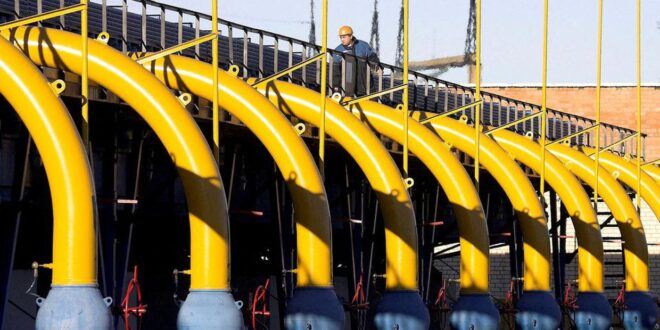The European Union’s energy imports slipped for the second quarter in a row compared to the previous year, a reversal of a trend of significant increases in energy imports between 2021 and 2022, the European Commission said Monday.
In the second quarter of 2023, compared with the same quarter of 2022, EU imports decreased by 39.4 percent in terms of value and 11.3 percent in terms of net mass. These results followed declines of 26.5 percent and 6.1 percent, respectively, in the first quarter of this year, the commission said in a press release citing Eurostat data.
In terms of net mass, Russia’s shares in EU imports of petroleum and natural gas have been decreasing continuously since the second quarter of 2022. Eurostat data shows that oil imports from Russia fell from a monthly average of 8.7 million metric tons in the second quarter of 2022 to 1.6 million metric tons in the second quarter of this year (-82 percent). In contrast, imports from extra-EU partners except Russia increased by 5.8 million metric tons, from 31.5 million to 37.3 million metric tons.
Russia’s share in total EU imports of petroleum was 4.0 percent in the second quarter of 2023, down from the 21.6 percent share recorded for the same quarter of last year, the European Commission said.
EU imports of natural gas dropped significantly (-17 percent in terms of net mass) in the second quarter of 2023, compared with the same quarter in 2022, the commission said.
Natural gas imports from Russia fell from a monthly average of 5.1 million metric tons in the second quarter of 2022 to 2.5 million metric tons in the second quarter of 2023, it said.
Decoupling from Russia
The European Commission noted that the Russia-Ukraine war led the EU to implement several packages of sanctions, which directly and indirectly affected the trade of oils and natural gas. An obvious sign of the impact is the growing diversification of energy supplies, the commission said.
Regarding petroleum, the EU ban on seaborne imports of Russian crude oil took effect on December 5, 2022, followed by the embargo on refined oil products February 5, 2023, which impacted results in the first and second quarters of 2023.
According to Eurostat data, Russia was the leading supplier of petroleum in the second quarter of 2022, with a share of 15.9 percent of total EU imports. In the second quarter of 2023, Russia ranked only 12th, with a share of 2.7 percent, down 13.2 percentage points (pp) compared with 2022.
By contrast, Norway (+3.5 pp to 13.7 percent), Kazakhstan (+3.2 pp to 10.2 percent), the United States (+2.1 pp to 13.6 percent) and Saudi Arabia (+2.3 pp up to 9.0 percent) saw their share increase over the same period, and Libya became an important partner, accounting for 8.1 percent of EU petroleum oil imports, according to the commission.
The situation was similar for natural gas in a gaseous state, with Russia’s share dropping by 14.5 pp to 13.8 percent of total EU imports, while the shares of Algeria (+9.3 pp) and Norway (+6.2 pp) increased significantly. In the second quarter of 2023, Norway was the EU’s top supplier with a share of 44.3 percent of total EU imports, followed by the United Kingdom (17.8 percent) and Algeria (16.5 percent).
The United States remained the EU’s leading LNG supplier in the second quarter of 2023, with a share of 46.4 percent in total EU imports, followed by Russia (12.4 percent), Qatar (10.9 percent), Algeria (9.9 percent) and Nigeria (5.1 percent), the commission said. Among these suppliers, only Algeria and Nigeria saw their share increase (+5.2 pp and +1.0 pp respectively) compared to the second quarter of 2022.
By contrast, the respective shares of the United States, Russia and Qatar fell by -2.8 pp, -2.7 pp and -1.1 pp respectively. Norway and Oman became important suppliers, with shares of 3.3 percent and 2.9 percent respectively, the commission said.

 Iran Energy News Oil, Gas, Petrochemical and Energy Field Specialized Channel
Iran Energy News Oil, Gas, Petrochemical and Energy Field Specialized Channel



